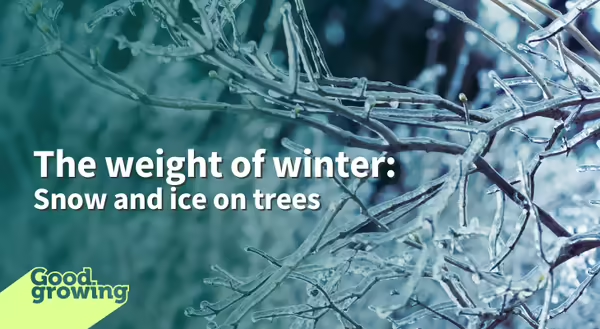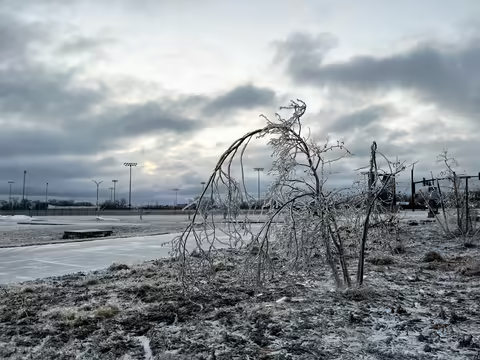
I write this article as I look out at a snow-covered landscape and give thanks for the warmth of my office. It is during these days that I’m reminded of the awesome adaptability of nature. Trees and animals can survive, even thrive, in a climate where temperatures can easily span one-hundred degrees and an abundance of weather conditions over the course of a year. Each season can provide certain challenges for trees, in the winter, the weight of snow and ice can overwhelm trees and cause incredible damage. Limbs can break and trees may fall under the weight of frozen precipitation. In the aftermath of a winter storm, proper tree management will influence tree health in the immediate and long-term future.
During a snowstorm or in the aftermath of an ice storm, trees can be seen bending under the weight of precipitation. It is natural to want to act but do so with caution. Small trees are flexible and often able to withstand temporary bending. For trees, patience is the proper protocol. Branches that are bent under the weight of snow, not broken, will recover over time and often, without special treatment.
Shrubs may benefit from snow removal. If action is required, snow can be removed by sweeping the snow off the plant using a broom and sweeping upward, gently knocking off loose snow. If the plant is weighted down by ice or heavy snow that will not easily dislodge, wait for it to melt naturally. Forcefully removing snow and ice from a tree or shrub can cause additional damage.
Once snow and ice have melted, it is time to assess the damage and formulate an action plan. A certified arborist can help with this process and provide expert recommendations. If you have questions, contact your local Illinois Extension office.
Trees that are most susceptible to snow and ice damage include:
- Trees with more than one central leader
- Trees cultivated in a clump or multi-trunked form (such as birch or serviceberry)
- Trees with poor form including narrow branch attachment points, have included bark, or are imbalanced
- Evergreens with an upright habit
Do not approach a tree limb if it is in contact with a power line, contact an arborist and the utility company for assistance. Broken or damaged limbs should be removed once it is safe to do so. Proper pruning cuts are crucial to ensure management activities are beneficial and help the tree recover.
As pruning activities commence, be mindful that removing more limbs than is necessary may reduce the tree’s ability to recover by removing photosynthesizing leaves. Trees are long-lived specimens that will take time to recover from winter storm damage. In the months and years after a tree has sustained damage, continue to monitor tree health, provide supplemental water when rainfall is insufficient, and make pruning decisions that will promote structural integrity and vigor.
Proper care and maintenance can help minimize or eliminate some of the risks and help prepare trees for bearing snow and ice loads. Healthy, vigorous trees are more capable of tolerating and recovering from winter damage.
Good Growing Fact of the Week: Illinois snowfall records start in 1902 and the snowiest winter on record was 1979 with 44.5 inches.
Sign up for our emails! Want to get notified when new Good Growing posts are available? SIGN ME UP
MEET THE AUTHOR
Emily Swihart is a Horticulture Educator with University of Illinois Extension, serving Henry, Mercer, Rock Island, and Stark counties since 2021. Emily provides horticulture programming with an emphasis on trees, native vegetation, and home landscape design.
